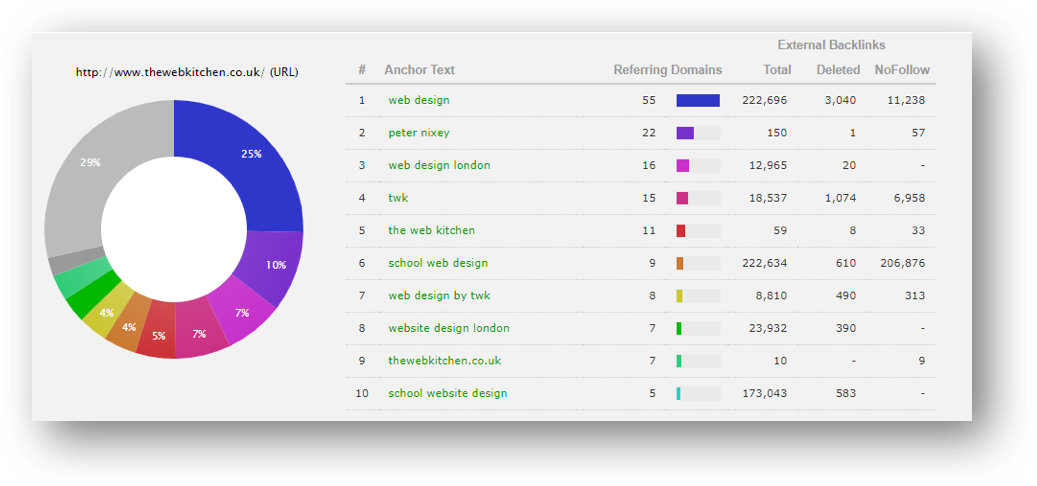First things first, the following strategy that I am going to reveal to you today is giving me an unfair advantage against my competition, and after reading this article you will be able to take this technique away and implement it in your SEO efforts, so you can dominate your own SERPs.
Calculating the perfect anchor text ratio for your keyword is something many SEO’s are not including in their strategy. Obtaining the correct anchor text distribution ratio can be the difference between being stuck on page 2 and dominating page 1.
The following guide will ensure you’ll be doing it the right way right away, and not welcoming yourself to a Google penalty for anchor text over optimization.
So, by now I am sure you have already asked yourself, “how do I know what my anchor text ratio should be?”
Google reveals its hand for every keyword across every search results page. You can take that data and reverse engineer it to give you your perfect anchor text optimisation ratio.
What are SEO’s doing with their anchor text?
The advice that comes from many SEO’s out there is needing a natural anchor text distribution, which usually looks something like this:
- 50% URL/Brand anchors. For example, a branded anchor for yoursite.co.uk would be “Your Site”. URL anchors are variants of the naked URL: yoursite.co.uk, https://yoursite.co.uk, www.yoursite.co.uk, etc.
- 25% topic anchors. These anchors are vague and are a specific niche, for example: “digital marketing” and “web design”.
- 15% miscellaneous anchors. For example “read more”, “go to website”, “click here”, etc.
- 10% longtail and keyword anchors. For example: “search engine optimisation”, “what is SEO”, “SEO service”.
Whilst many people concern themselves with keeping their ratio of anchors as close to this distribution as possible, I see a lot of sites optimising their anchors without any direction.
It is actually normal to find that a company’s website won’t be adhering to these recommendations. To keep us SEO’s guessing, Google randomises rankings to throw us off the scent of what it takes to rank in SERP verticals. Google has patented this as the Random Documents Patent. Find out more info here if you wish.
Let’s look at an example of this in the live arena
The below image is the anchor text distribution for a site ranking on page 1 for ‘web design London’:

You can see that this site’s anchor text profile looks nothing like the before mentioned recommended distribution. It is for this reason that you shouldn’t be adhering to these recommendations.
What you should be doing is something so scientific, and technically astute, that your brains are going to blow once I reveal my trick. I’m kidding, it’s easy when you know how.
Reverse engineering the existing anchor text ratios of all the sites on page one.
That is all there is to it! Punch your target keyword into Google, look at the anchor text ratios of all the sites on page one for that target keyword, take the average anchor text distribution for each and then guess what, you have got the exact anchor text ratio Google want to see.
How do you get this data?
To find the anchor text ratio sweet spot for your target keywords, let’s break down the steps you need to take:
- For your target keyword, take a list of the pages that are ranking on page one for that keyword. The top 5 will suffice, but you can always calculate the top 10 if you wish.
- Insert each page into your favorite link analyser tool (personally I use Majestic.com) and export all the anchor text data for that page as per the screenshot below:

- Once all your data are exported into an excel document, categorize all the anchors by type (brand, topical, miscellaneous, long-tail).
Add all the types together for each site and calculate the average ratio for that category and voila, you have your perfect anchor text ratio for your keyword!
Crush your SERPs, now!
Don’t wait until next week to put this into action. I have had some hugely impressive results using this method. I have found this to be the difference between a page 2 and a page 1 ranking. It works like a charm.
If you have got your on-page on-point, and you are keeping your links relevant, and your velocity is consistent, this trick will move the needle for you.
If you want any help with your marketing efforts, you can get hold of me at my agency Loop Digital, or tweet me @tlivingstoneseo and I will be happy to dissect any issues you are having.

